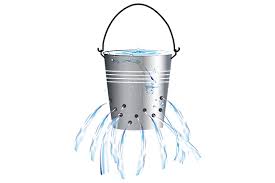Churn, the rate at which customers abandon your SaaS business, is a critical metric that can significantly impact your bottom line. Reducing churn is essential for sustainable growth and success. In this post, we’ll explore effective strategies to minimize churn, along with key metrics to monitor customer attrition and benchmarks of best-in-class performance.
- Exceptional Onboarding Experience
- Strategy: Provide personalized onboarding guidance to help users understand your product’s value and ensure a smooth start.
- Key Metric: Time-to-Value (TTV) measures the time it takes for a customer to achieve their first “win” or see tangible results with your product.
- Benchmark: Achieving a TTV of 7 days or less indicates a successful onboarding experience and improved customer retention.
- Proactive Customer Support
- Strategy: Offer proactive support to address customer issues and concerns before they escalate.
- Key Metric: First Response Time (FRT) measures the time it takes for your support team to respond to customer inquiries.
- Benchmark: Maintaining an FRT of less than 2 hours demonstrates a customer-centric approach and increases customer satisfaction.
- Continuous Product Improvement
- Strategy: Regularly update and enhance your product based on customer feedback and market trends.
- Key Metric: Feature Adoption Rate tracks the percentage of customers who have adopted new product features.
- Benchmark: Achieving a Feature Adoption Rate of 60% or higher shows that customers find value in your product updates.
- Customer Engagement and Usage
- Strategy: Monitor customer engagement metrics to identify at-risk users and re-engage them.
- Key Metric: Monthly Active Users (MAU) measures the number of unique users engaging with your product each month.
- Benchmark: Maintaining a high MAU rate, such as 70% or more, indicates strong product usage and customer loyalty.
- Personalization and Segmentation
- Strategy: Segment your customer base and tailor your communications and offerings to individual preferences.
- Key Metric: Churn Rate by Customer Segment compares churn rates between different customer groups.
- Benchmark: Lowering churn rates for high-value segments by 10% or more demonstrates effective personalized retention strategies.
- Customer Satisfaction and Feedback
- Strategy: Gather feedback from customers regularly and act on their suggestions and concerns.
- Key Metric: Customer Satisfaction Score (CSAT) measures overall customer satisfaction with your product and support.
- Benchmark: Achieving a CSAT score of 9 or above (out of 10) reflects excellent customer satisfaction and reduces churn.
- Educational Resources and On-going Training
- Strategy: Provide educational resources and on-going training to help customers get the most out of your product.
- Key Metric: Feature Utilization Rate tracks how often customers use various features of your product.
- Benchmark: Increasing the Feature Utilization Rate to 80% or higher indicates that customers are fully leveraging your product’s capabilities.
Reducing churn is a constant effort that requires a deep understanding of your customers and a commitment to delivering exceptional experiences. By implementing the strategies mentioned above and monitoring the key churn metrics, you can proactively address customer needs, improve retention, and achieve best-in-class performance for your SaaS business. Remember, customer satisfaction and loyalty are the pillars of sustained success, and continuous improvement in these areas will drive growth and differentiate your business in the competitive SaaS landscape.


Comments
One response to “How to Reduce Churn for Your SaaS Business – Mastering Customer Retention”
[…] Analysis: Churn, or customer attrition, can significantly impact revenue. By analyzing customer data and […]